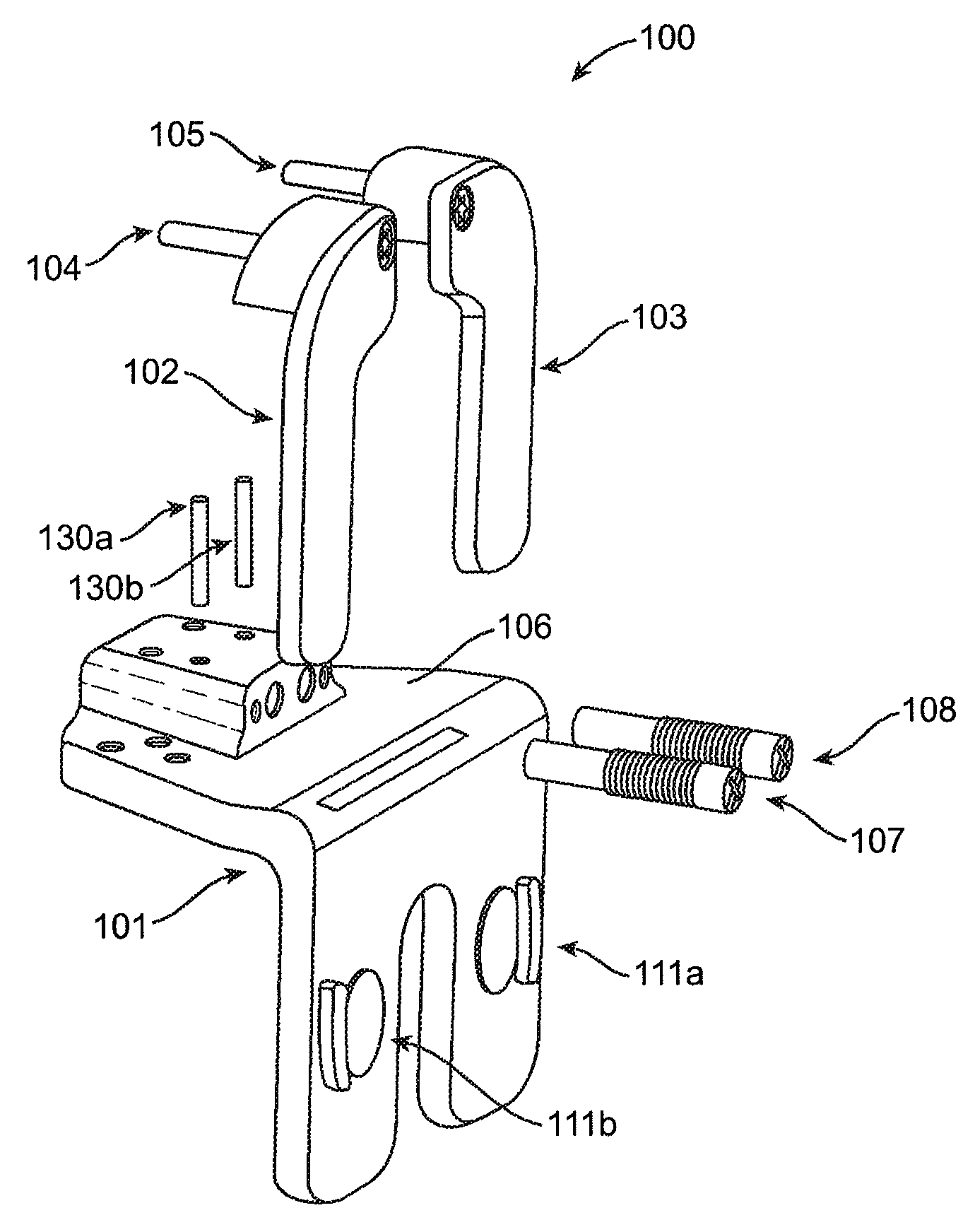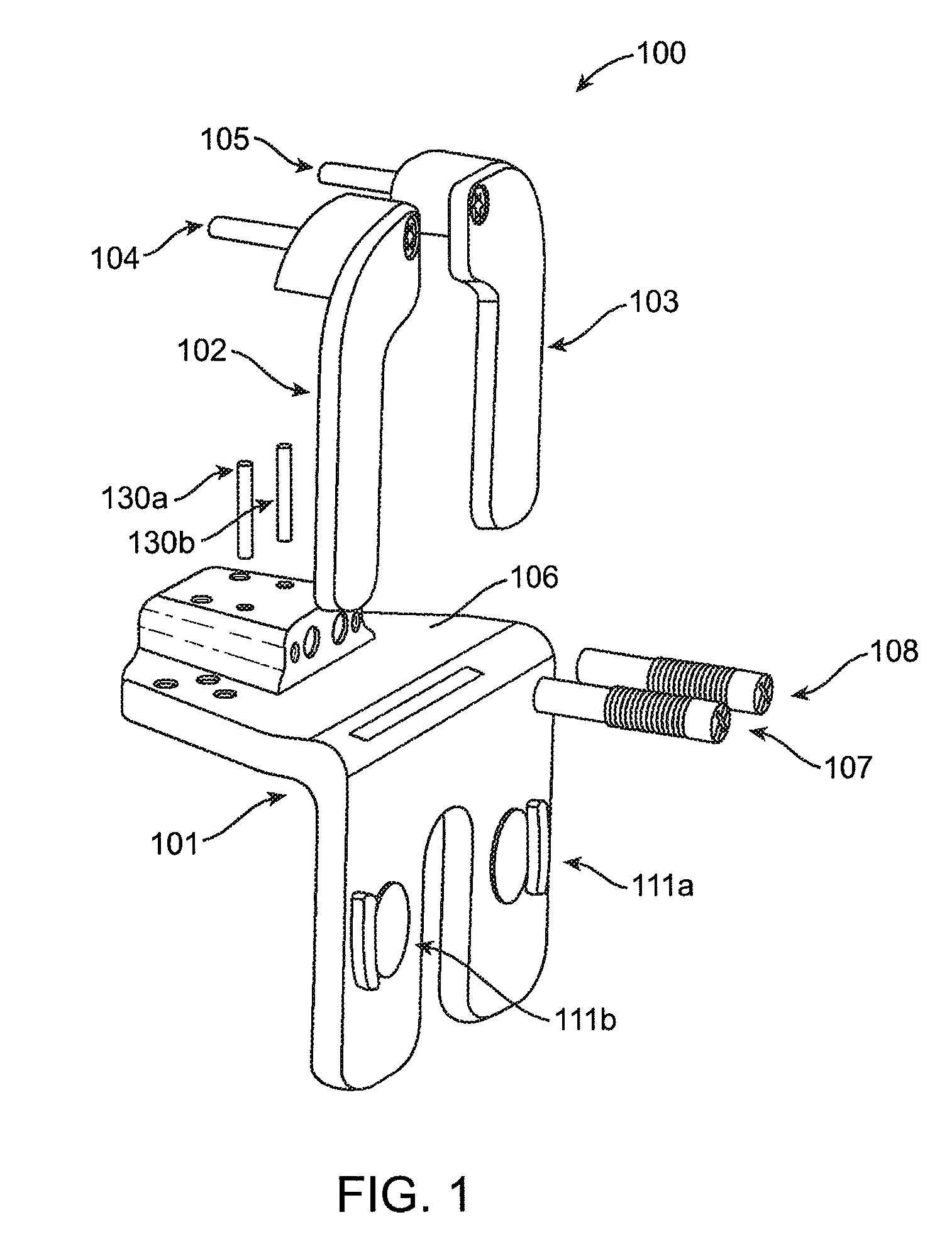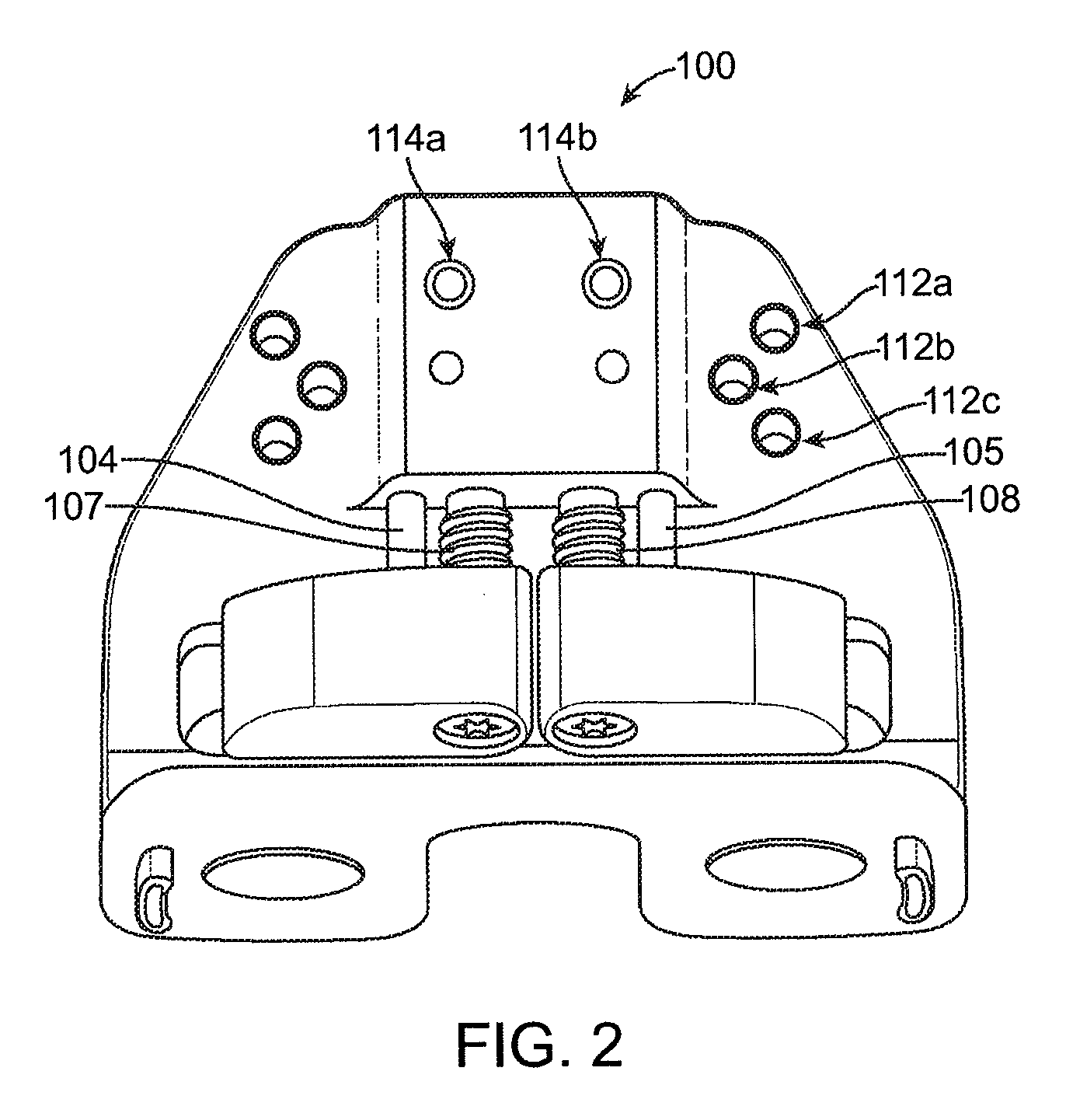System for positioning a cutting guide in knee surgery
a cutting guide and system technology, applied in the field of medical surgical devices, systems and methods, can solve the problems of affecting the patient's recovery, and affecting the patient's recovery, and none of the methods that direct the condition or tendencies of the soft tissue structures, such as the lateral collateral ligament and the medial collateral ligament, about the knee, and the distraction method would typically not have any accurate means of determining the ligament force between the medial side of the knee and th
- Summary
- Abstract
- Description
- Claims
- Application Information
AI Technical Summary
Benefits of technology
Problems solved by technology
Method used
Image
Examples
Embodiment Construction
[0076]Embodiments of the present invention provide systems, devices, and methods for facilitating the alignment and balancing of the knee during knee replacement surgery and verifying such balance and alignment. Once the knee is properly aligned, a cut parallel to a previously made cut on the tibia can be made on the distal femur. A prosthetic knee placed on these cuts will maintain the proper alignment of the knee.
[0077]Referring now to FIG. 1, a distal femoral alignment assembly or component 100 according to embodiments of the invention is shown in an exploded view. As shown in FIG. 1, distal femoral alignment assembly 100 can be used for either the left or right knee, i.e., one side of the distal femoral alignment assembly may be the medial side while the other is the lateral side and vice versa. Distal femoral alignment assembly 100 comprises a main body 101, an adjustable medial femoral portion coupled to the main body, and an adjustable lateral femoral portion coupled to the m...
PUM
 Login to View More
Login to View More Abstract
Description
Claims
Application Information
 Login to View More
Login to View More - R&D
- Intellectual Property
- Life Sciences
- Materials
- Tech Scout
- Unparalleled Data Quality
- Higher Quality Content
- 60% Fewer Hallucinations
Browse by: Latest US Patents, China's latest patents, Technical Efficacy Thesaurus, Application Domain, Technology Topic, Popular Technical Reports.
© 2025 PatSnap. All rights reserved.Legal|Privacy policy|Modern Slavery Act Transparency Statement|Sitemap|About US| Contact US: help@patsnap.com



